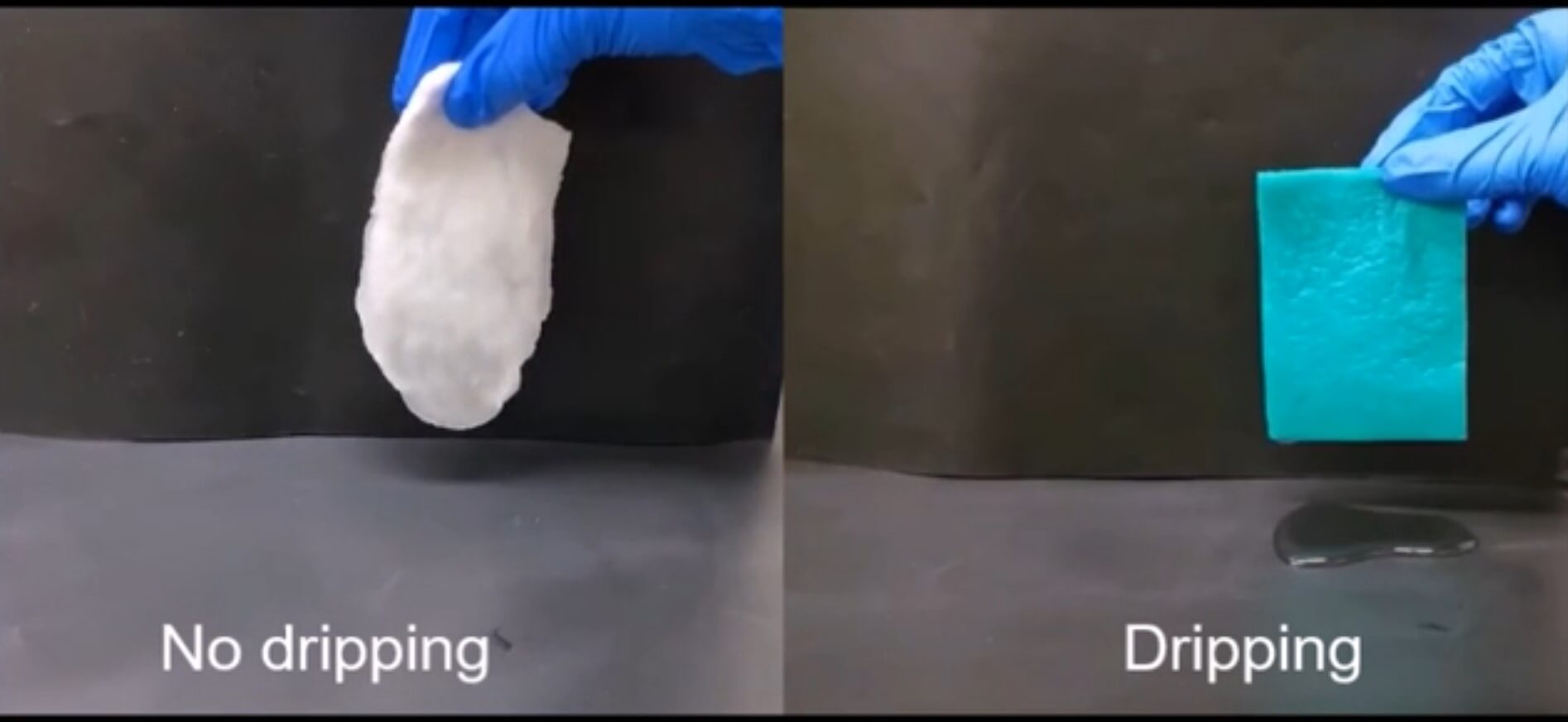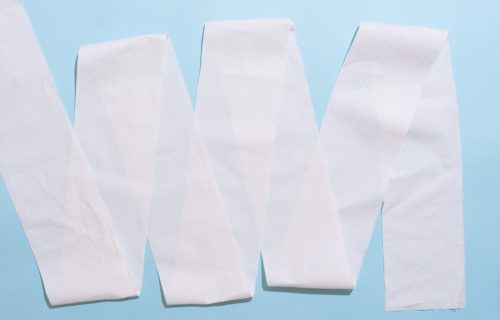COLLEGE PARK, Md. — Usually for kitchen spills, a rag or paper towel will clean up everything just fine. Now, scientists have developed an even better “picker-upper” that absorbs three times more water-based liquids using hydrogel, a gelatin-like material in the form of a dry sheet.
Both porous materials (cloth, paper) and hydrogels can absorb liquid. Porous materials are useful in that they’re flexible, foldable, and easy to use. However, they don’t absorb very well. Hydrogels are very absorbent and are made of a web of large molecules that make them capable of soaking up over 100 times their weight in water. So, why don’t people use these materials more often? Unlike porous materials, they become crumbly and brittle when they dry out.
To fix this, scientists at the University of Maryland created a way to include the desirable properties of both products into one.
“We reimagined what a hydrogel can look like,” says corresponding author Srinivasa Raghavan in a media release. “What we’ve done is combine the desired properties of a paper towel and a hydrogel.”
How did scientists build a smarter towel?
To create the hydrogel, the researchers mixed in acid, base, and other ingredients in a zip-lock bag. The mixture would then react and release carbon dioxide bubbles within the gel to create a porous, foam-like material. Then, scientists sandwiched the bag between glass to create a sheet before exposing it to UV light, which removes the pores and sets liquid around the bubbles. They finished by dipping the sheet in alcohol and glycerol and let it air dry so that the sheet would remain soft like fabric.

“To our knowledge, this is the first hydrogel that has been reported to have such tactile and mechanical properties,” says Raghavan, who adds that it even stayed soft throughout changes in the weather and its environment for one year. “We are trying to achieve some unique properties with simple starting materials.”
Compared to a standard rag and paper towel, a gel sheet of the same size can absorb more than three times the amount of liquid. When researchers used the gel sheet for 0.8 ounces of spilled water, the sheet absorbed it within just 20 seconds, and didn’t drip water out of it. On the other hand, the cloth pad only absorbed about 60 percent of the water while leaving drips. They noticed similar results using thick liquids like blood, too. Study authors discovered that the sheet could absorb almost 1.4 oz of blood within one minute and held onto it, yet gauze dressings only absorbed 55 percent and did not hold it well.
“In principle, the gel sheets could be a superior form of paper towels,” says Raghavan.
In the future, the team is looking to increase their efficacy even more by increasing absorbency and making the material stronger, and possibly even expand to oil absorbance. They’re also looking to decrease costs and make the sheets reusable as well.
“I’m always interested in taking our inventions further than just publishing a paper. It would be wonderful to take it to actual practical use,” concludes Raghavan.
The findings are published in the journal Matter.
